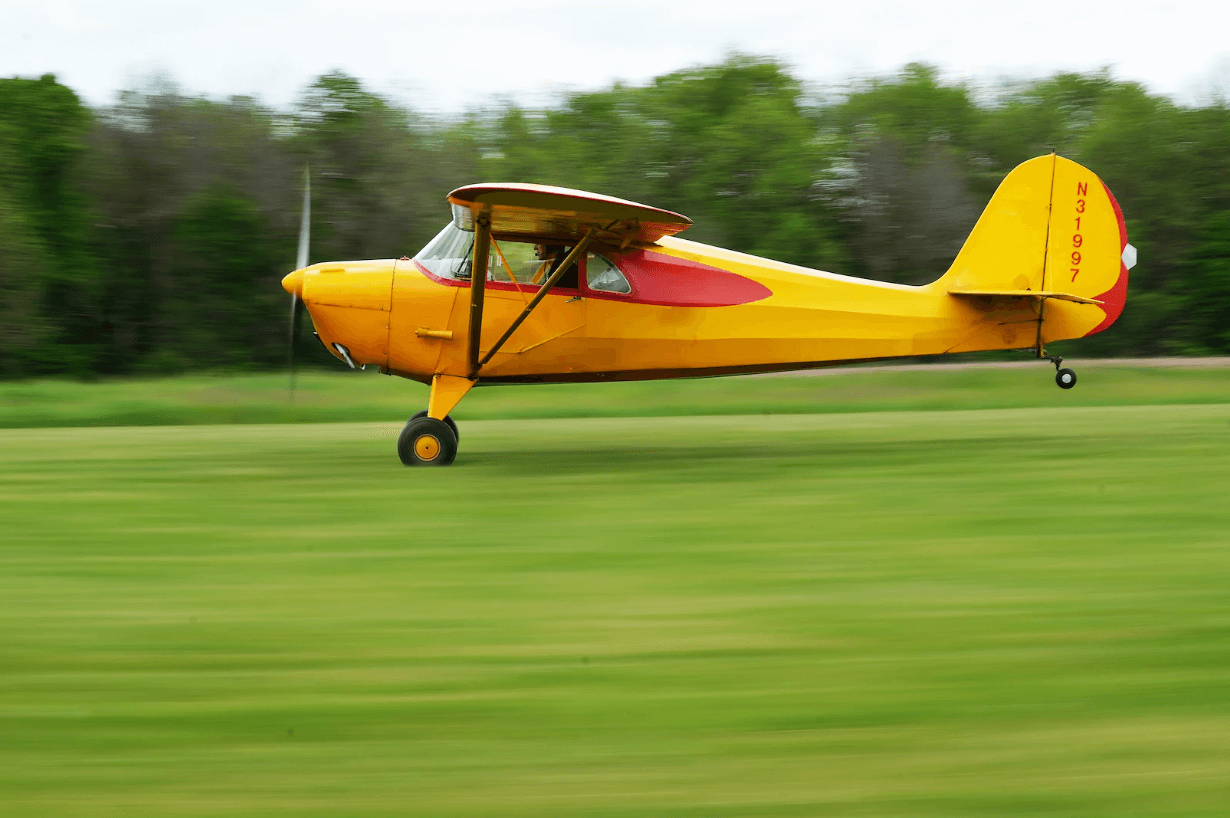Professor and pilot John Lumkes loves the view from 1,000 feet
Like many small kids, Lumkes, Purdue professor of Ag. and Biological Engineering and assistant dean of the office of academic programs, dreamed about flying.
As an eight-year-old, Lumkes would gaze at the sky, watching planes take off and land at the Lake Lawn Airport, just two miles from the family farm near Delavan, Wis.
“We got an old scanner out of the trash and fixed it so we could listen to the pilots,” said Lumkes.
His first aviation experiences were limited to a string of introductory flights given as birthday gifts. Lumkes could not wait to get his hands on the controls.
After college, Lumkes decided to join the Air Force to become a pilot.
On the day he was to meet with recruiters, the lanky Lumkes measured half-an-inch over the maximum acceptable pilot height of 6-ft, four inches. An avid runner who once tried out for the U.S. Olympic Team in the steeplechase, Lumkes went on a 10-mile run, hoping the constant pounding on his joints would get him under the height restriction.
“But that didn’t work,” he said.
That’s when he decided to focus on engineering, pursuing graduate school studies as well as a running career.
“I always loved engineering. I figured, once I got my degree, then I would resume flying. Then I got married and went to graduate school. Well, I thought, once I get done with that, I’ll start flying,” Lumkes said.
“Lo and behold, while I was in grad school, our first child was born. By the time I graduated, the second one had just arrived. With two kids, I figured I would wait a little longer to learn to fly. Seven years after I got my Ph.D (he was teaching at the Milwaukee School of Engineering), we moved here.”

At Purdue, engineering, flying and teaching all came together.
They purchased a lot in a community 10 miles south of campus that abutted a 3,000-ft. grass landing strip.
“One of the neighbors took us on an airplane ride to show us the lot from the air. It reminded me how much I loved to fly,” Lumkes said. “We put an offer on the lot that night.”
Lumkes designed the home himself that summer before joining the Purdue faculty. Plans included a 38-foot garage door. Even though he didn’t own a plane, Lumkes wanted a home for one when he found his perfect match.
Two years ago he found it in a 1941 Aeronca Chief, a yellow and red tail-dragger that weighs a slight 760-pounds.
“It was originally designed during a time in aviation history where flying involved landing on grass strips, farm pastures and meadows,” Lumkes said.
“It’s perfect for putzing around on a summer evening and perfect for our grass runway. Because of the small engine (65 horsepower), I average less than 4 gallons of fuel per hour. It’s really economical.”
“It’s kind of like driving a go-kart compared to driving a semi. It’s a very light plane, so on a windy day, you go up and down on every gust.”
There is no electrical system on the plane to draw power off the small engine. That means fewer things can go wrong on the plane. It’s more like the plane the Wright Brothers flew at Kitty Hawk in 1903 than it is to today’s airplanes.
But that means everything is done manually, including starting the engine by hand.
That process starts when Lumkes ties the plane’s rear wheel to the basketball goal on his driveway.
“I do my pre-flight inspection, then I secure the airplane, go up to the front of the plane and turn the propeller until it starts, pull the chocks away, untie it from the basketball goal, jump in the plane and away we go. It’s as simple as that.”
Lumkes rarely misses a chance to fly, sometimes flying 3-4 times a week during the summer.
“I understand scientifically and the engineering of how a plane works,” Lumkes said. “But it’s still amazing every time I see the wind flowing over these fixed wings sustaining flight and taking me wherever I want to go.”
Like many, Lumkes admits it has been difficult to work out of his home during the pandemic. But the plane has proven to be the perfect remedy for whatever ails Lumkes during these unusual times.
“You can have a busy day, or have a rough drive through traffic, or now, with Covid-19 and discussions on racial disparity, there is so much going on in our world, there is a lot of polarization,” Lumkes said.
“Flying provides a different perspective. The world looks different from 1,000 feet. There is a certain scale, a certain pace. Everything looks smaller, moving slower down below. The view from above makes everything look a little less problematic. The kaleidoscope below contains many different elements, fields, woods, people, buildings,” Lumkes said. “Yet they all fit together and are more beautiful together than apart.”













